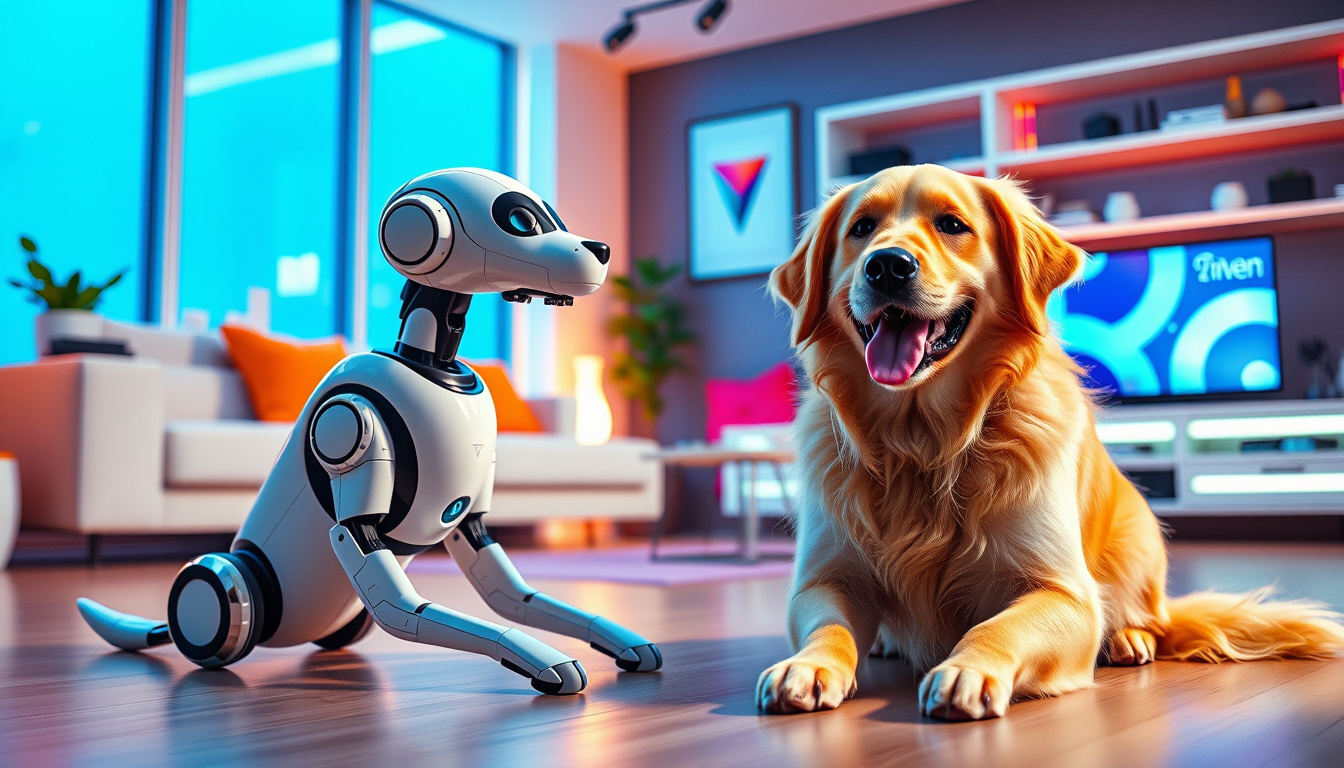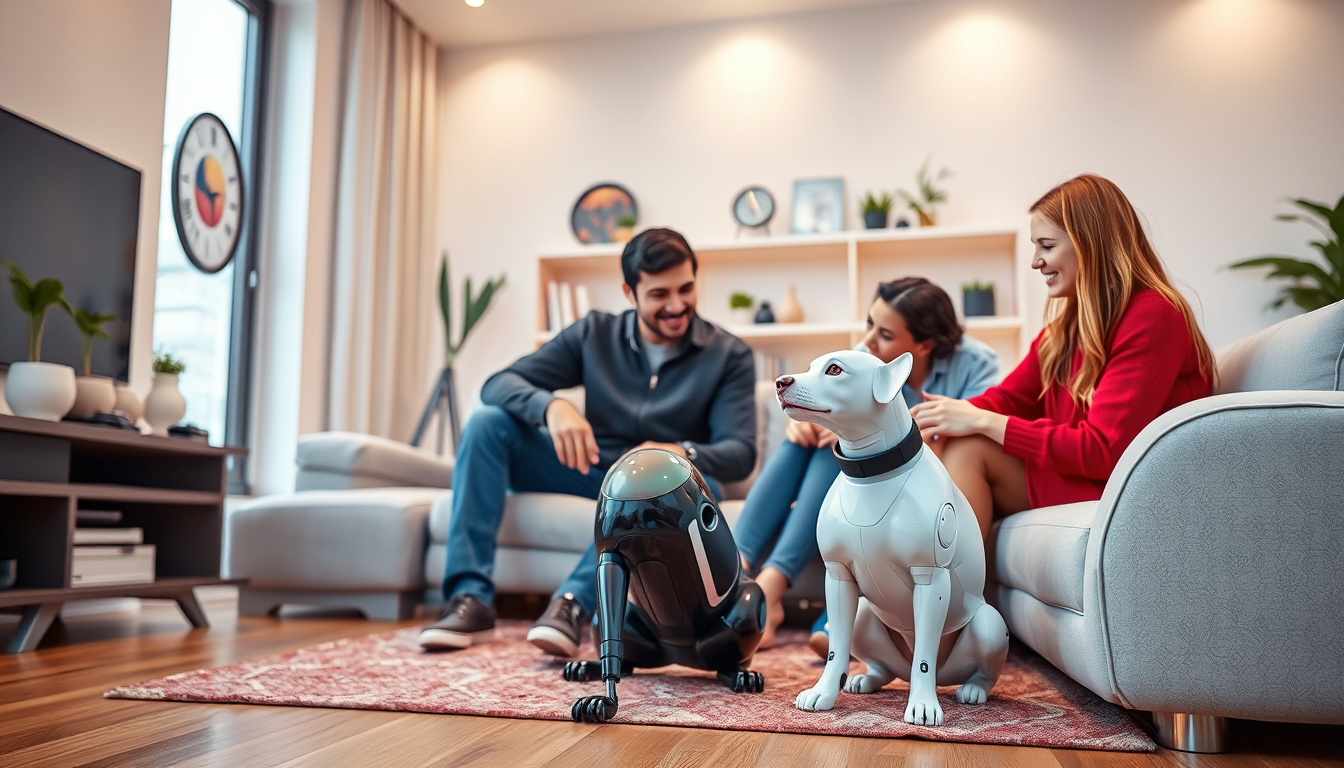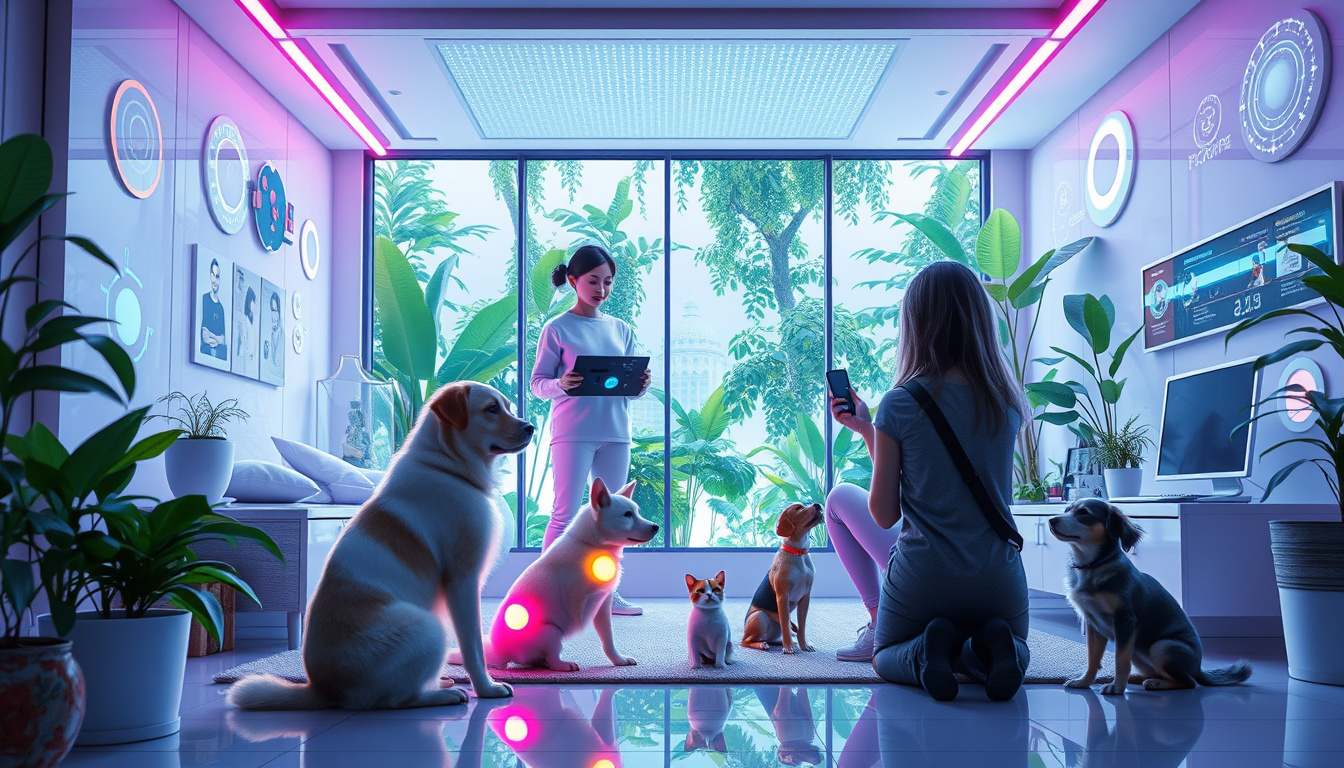As technology evolves, so do our ways of connecting with the world around us. The emergence of AI pets has sparked intriguing discussions on their place in our lives compared to traditional, real pets. This article explores the concept of AI pets versus real pets: The emotional tech revolution. We delve into how each type of pet influences our emotional well-being, the benefits and challenges associated with both, and what the future holds for our relationships with these unique companions.

Key Takeaways
- AI pets offer convenience and affordability compared to real pets.
- The emotional connections people form with real pets are profound and often unmatched by AI pets.
- Real pets come with responsibilities and commitments that can be challenging for some owners.
- AI pets can provide companionship without the demands of traditional pet care.
- The future of pet ownership may blend human emotional needs with technological advancements in companionship.
Introduction to AI Pets and Real Pets
As technology continues to evolve at an unprecedented pace, the concept of companionship is also undergoing a transformation. The debate of AI Pets vs. Real Pets: The Emotional Tech Revolution explores the fascinating intersection between affectionate companionship and advanced technology. AI pets, powered by artificial intelligence, are designed to mimic the behaviors and emotional connections humans often seek in real pets. Unlike traditional pets, which offer unconditional love and companionship but require care and maintenance, AI pets promise an alluring alternative that reduces the everyday responsibilities of pet ownership. This article seeks to delve into the emotional dynamics of both types of companions, discussing their respective benefits and drawbacks, and how they cater to the growing need for emotional support in our increasingly digital world.
The Emotional Connection with Pets: A Comparative Study
As we delve into the emotional connection with pets, an intriguing comparison arises:
IAI Pets vs. Real Pets: The Emotional Tech Revolution. In recent years, advancements in artificial intelligence have given rise to virtual companions that can mimic the behaviors and emotions typically associated with real-life animals. While the unconditional love and companionship of real pets have long been celebrated by pet owners, AI pets are entering the scene as innovative alternatives that promise emotional fulfillment through advanced programming. This comparative study seeks to explore how these two categories of companions affect human emotions, providing insights into their interactive capabilities, the depth of emotional connections formed, and the psychological benefits each can offer. As we navigate this emotional landscape, it becomes essential to consider personal preferences and lifestyle choices when deciding between the authenticity of a fur-covered friend and the convenience of a tech-enabled companion.
‘Technology, like art, is a soaring exercise of the human imagination.’ — Daniel Bell

Benefits of AI Pets: Convenience and Affordability
As we delve into the subject of AI Pets vs. Real Pets: The Emotional Tech Revolution, it’s essential to highlight the myriad benefits that AI pets offer, particularly in terms of convenience and affordability. These innovative companions provide an effortless way to experience the joy of pet ownership without the significant time, financial, and emotional commitment that comes with caring for real animals. For instance, AI pets require no feeding, grooming, or veterinary visits, making them suitable for individuals with hectic lifestyles or those living in environments where traditional pets might not be allowed. Additionally, the affordability factor can’t be overlooked; AI pets often have a lower initial purchase price compared to the costs associated with adopting and maintaining a real pet, such as food, supplies, and health care. This technology offers a unique solution for those who desire companionship but may be constrained by their current life circumstances, ultimately demonstrating that AI Pets vs. Real Pets is less about competition and more about accessibility and ease of companionship.
Challenges of Real Pets: Responsibility and Commitment
When weighing the options between AI pets vs. real pets, it’s essential to acknowledge the inherent challenges that come with owning a living animal. Real pets demand a significant commitment, requiring not only time and financial resources but also emotional investment. From regular feeding and grooming to exercise and vet visits, caring for a real pet can be a full-time job in itself. Moreover, the bond formed with a real pet often brings joy and companionship that deeply enriches our lives, yet it also entails facing the difficult realities of pet ownership, such as health concerns and the sorrow that comes with loss. On the other hand, AI pets provide a stress-free alternative, offering companionship without the responsibilities that come with caring for an animal. However, as we delve deeper into the emotional tech revolution, one must consider whether AI pets can truly replicate the love, loyalty, and authentic connection provided by their real counterparts. This ongoing debate highlights the complexities of pet ownership and companionship in our modern society.

The Future of Human-Pet Relationships in a Tech-Driven World
As we navigate through the 21st century, the landscape of human-animal interaction is evolving dramatically, particularly with the rise of technology. The emergence of AI pets versus real pets highlights a significant aspect of this emotional tech revolution. While traditional pets offer companionship, loyalty, and a connection deeply rooted in our emotional landscape, AI pets bring unique technological benefits, such as customizable behaviors and constant availability. This shift raises critical questions about how we form bonds with our companions—can a programmed device truly replicate the unquantifiable connection we share with our real pets? As AI continues to advance, the future of human-pet relationships seems poised to blur the lines between organic and synthetic, creating a fascinating conundrum that challenges our understanding of love, companionship, and what it means to care for another living being.
Frequently Asked Questions
What are AI pets and how do they differ from real pets?
AI pets are digital or robotic companions designed to mimic the characteristics and behaviors of real animals, allowing for emotional connections without the responsibilities of caring for a living creature. In contrast, real pets are biological animals that require feeding, grooming, and attention.
What emotional benefits do real pets provide compared to AI pets?
Real pets can offer genuine emotional support and companionship due to their ability to form deep bonds with their owners through shared experiences and non-verbal communication, something that AI pets may struggle to replicate despite their programmed interactions.
What are some advantages of having AI pets over real pets?
AI pets offer convenience by not requiring food, veterinary care, or grooming, making them more affordable and suitable for individuals who may have allergies, limited space, or time constraints. They can also be programmed for specific interactions that make them entertaining or comforting.
What responsibilities come with owning a real pet?
Owning a real pet involves several responsibilities such as providing proper nutrition, regular exercise, grooming, veterinary care, and socialization. It requires commitment, time, and financial resources to ensure the pet’s well-being.
How might the future look for human-pet relationships in a tech-driven world?
In a tech-driven world, human-pet relationships may evolve to integrate more AI technologies, blurring the line between virtual and real companionship. AI pets could complement real pets, offering companionship in ways previously unimagined, while real pets may continue to fulfill roles that require emotional depth and connection.
